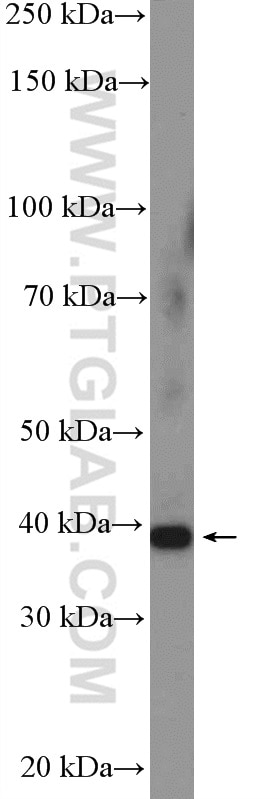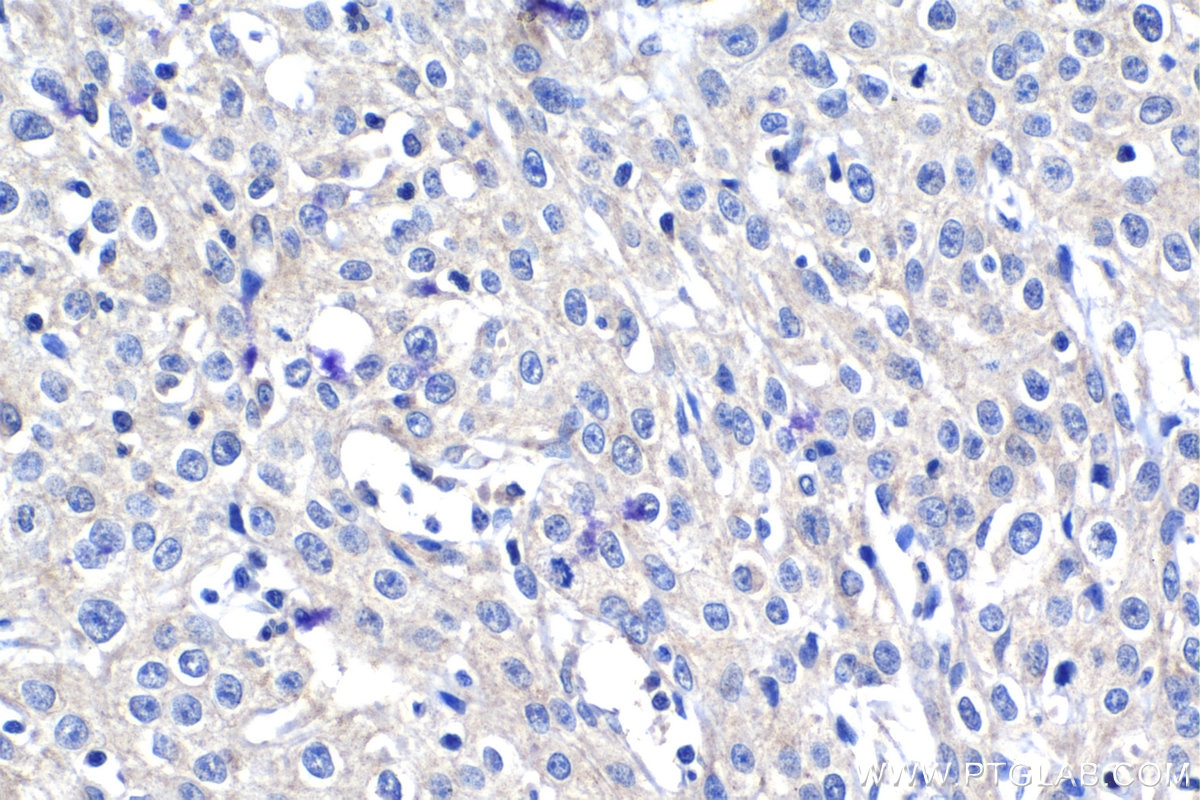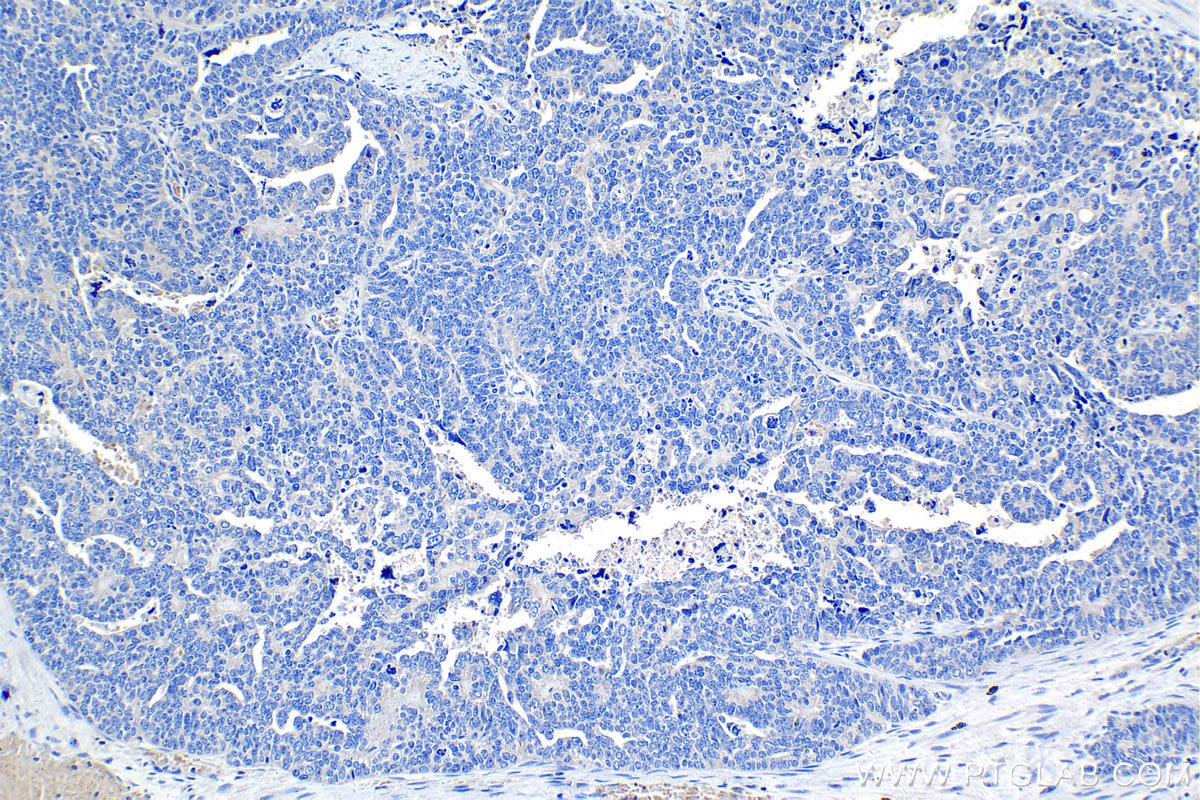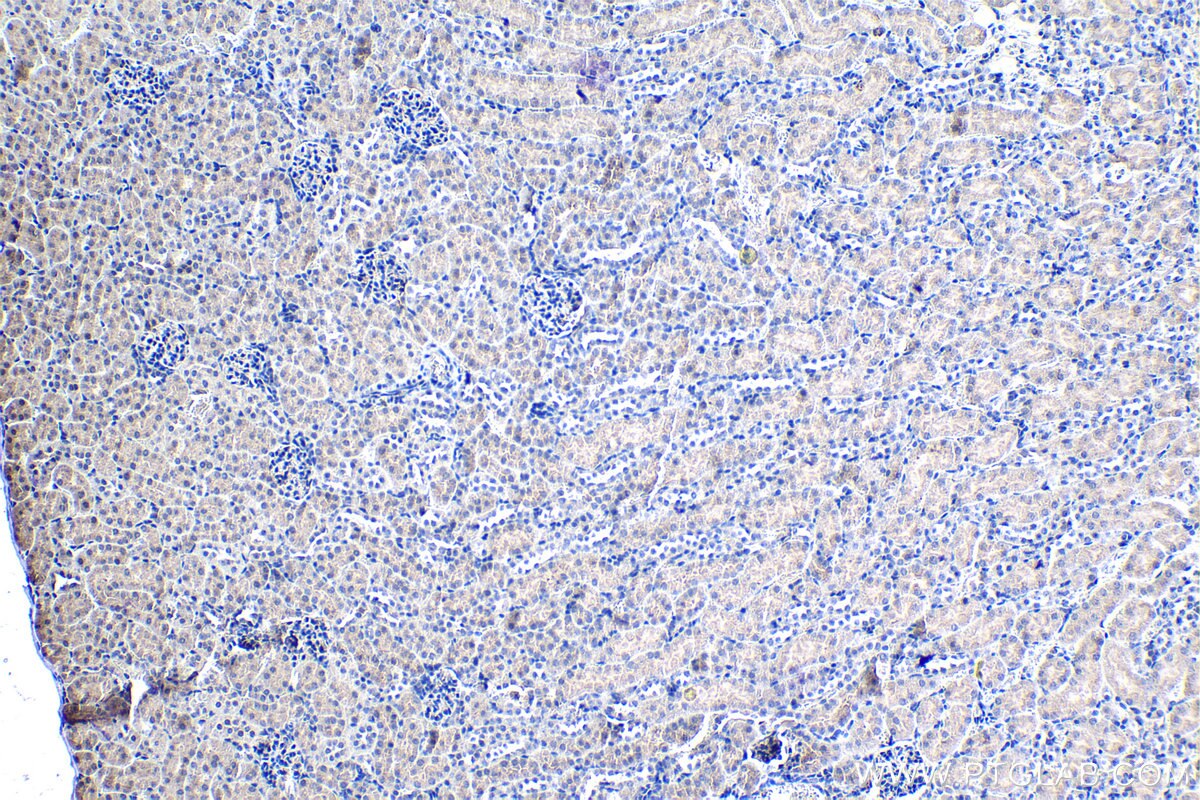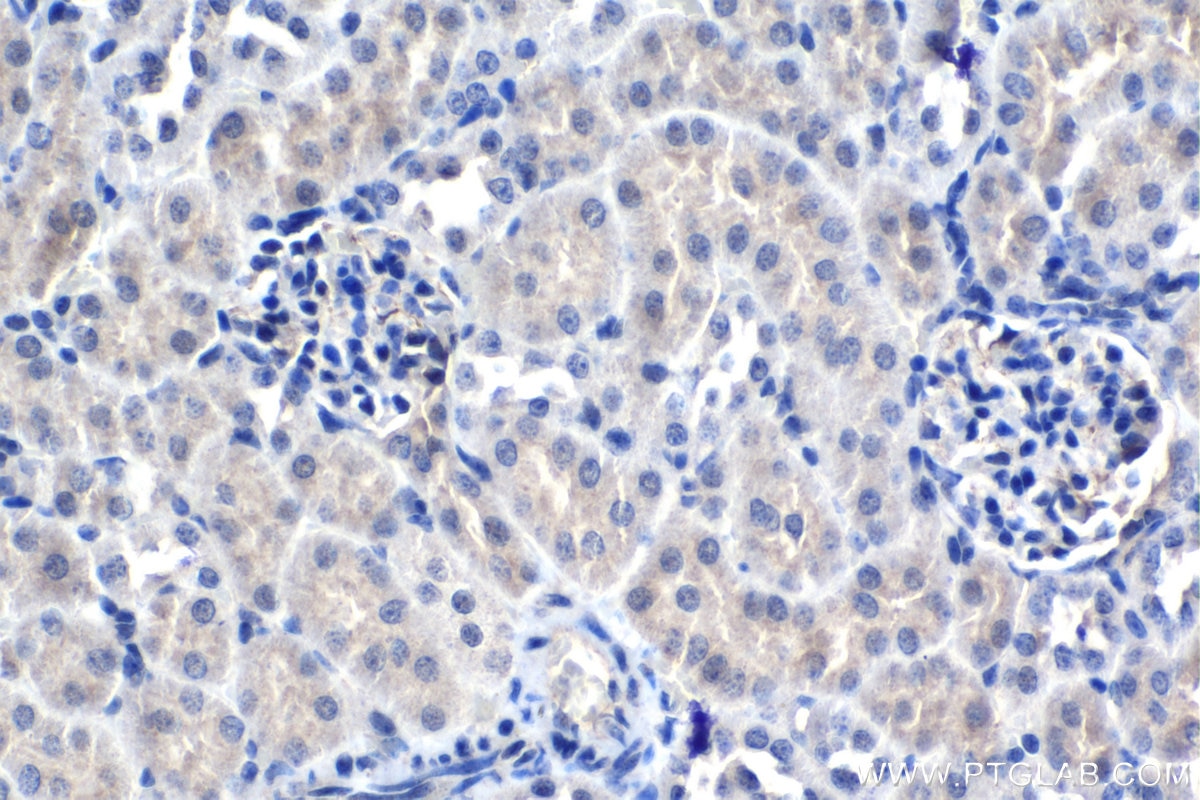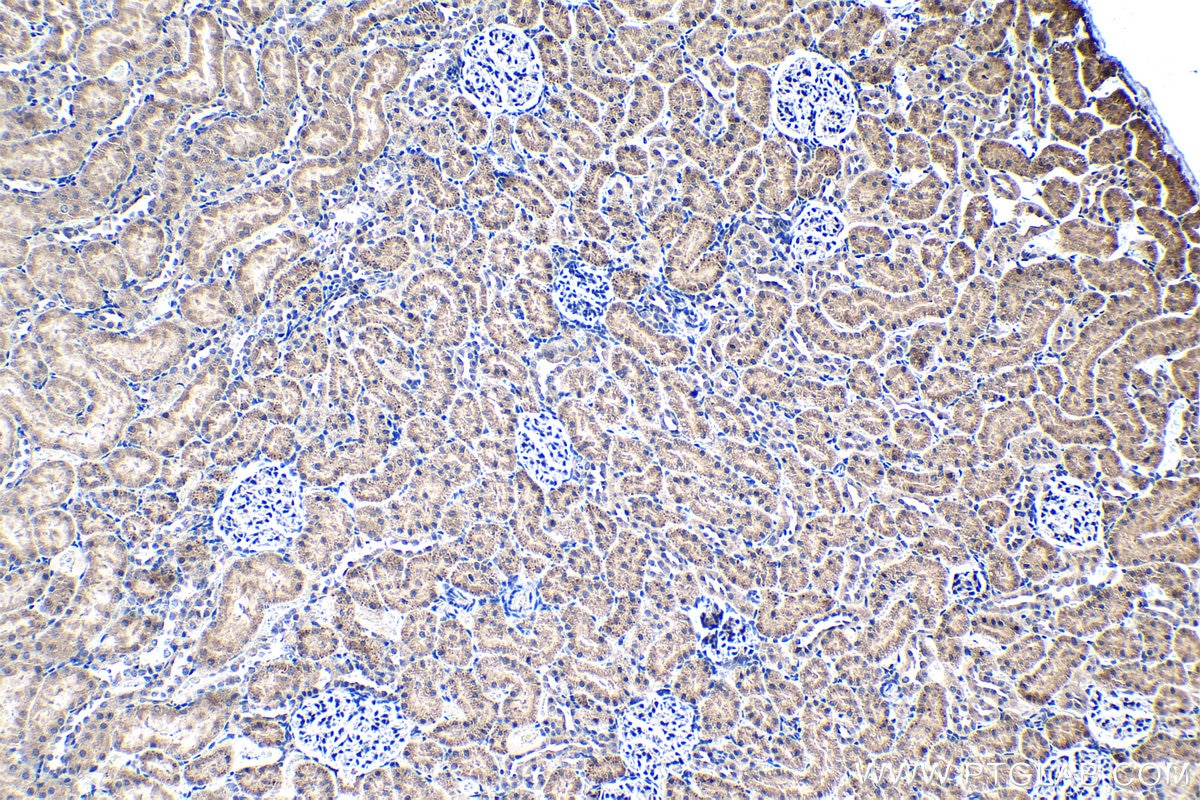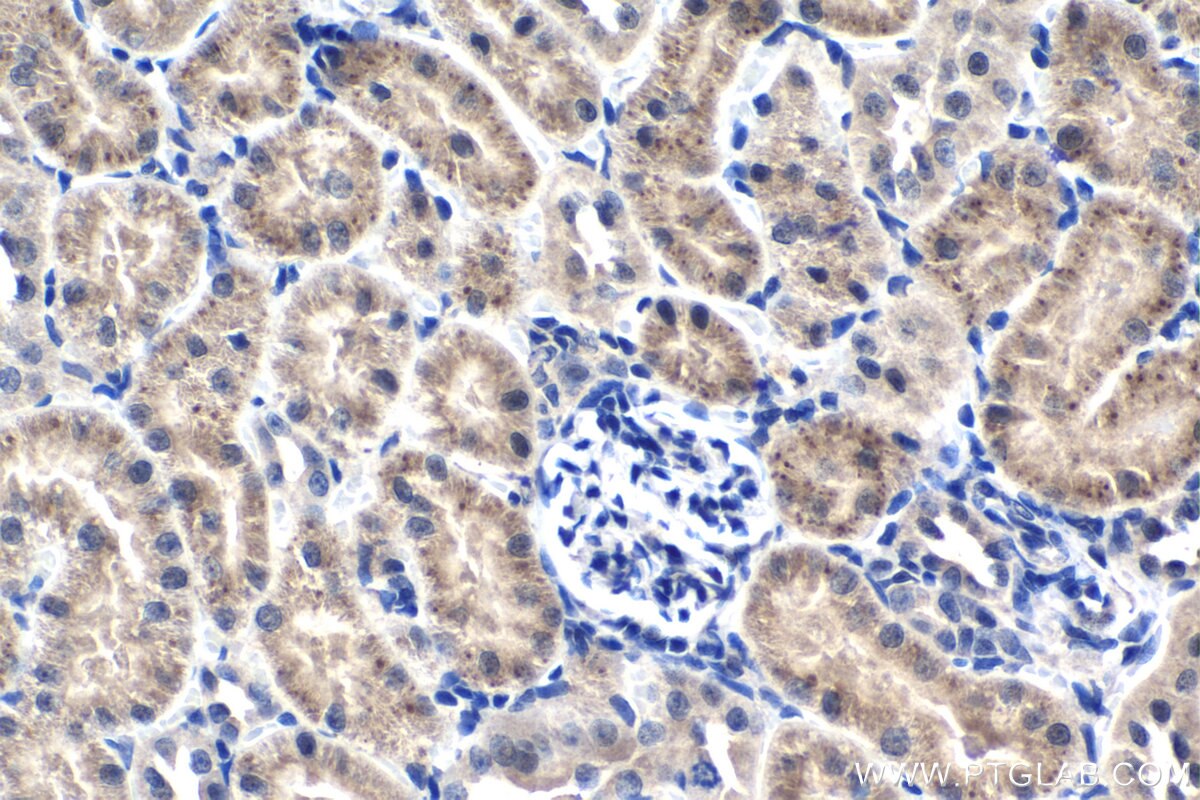- Phare
- Validé par KD/KO
Anticorps Polyclonal de lapin anti-TSG-6
TSG-6 Polyclonal Antibody for WB, IHC, ELISA
Hôte / Isotype
Lapin / IgG
Réactivité testée
Humain, rat, souris
Applications
WB, IHC, IF, ELISA
Conjugaison
Non conjugué
N° de cat : 13321-1-AP
Synonymes
Galerie de données de validation
Applications testées
| Résultats positifs en WB | cellules NIH/3T3, |
| Résultats positifs en IHC | tissu rénal de rat, tissu de cancer du col de l'utérus humain, tissu de tumeur ovarienne humain, tissu rénal de souris il est suggéré de démasquer l'antigène avec un tampon de TE buffer pH 9.0; (*) À défaut, 'le démasquage de l'antigène peut être 'effectué avec un tampon citrate pH 6,0. |
Dilution recommandée
| Application | Dilution |
|---|---|
| Western Blot (WB) | WB : 1:500-1:1000 |
| Immunohistochimie (IHC) | IHC : 1:250-1:1000 |
| It is recommended that this reagent should be titrated in each testing system to obtain optimal results. | |
| Sample-dependent, check data in validation data gallery | |
Applications publiées
| KD/KO | See 1 publications below |
| WB | See 7 publications below |
| IHC | See 3 publications below |
| IF | See 2 publications below |
Informations sur le produit
13321-1-AP cible TSG-6 dans les applications de WB, IHC, IF, ELISA et montre une réactivité avec des échantillons Humain, rat, souris
| Réactivité | Humain, rat, souris |
| Réactivité citée | rat, Humain, souris |
| Hôte / Isotype | Lapin / IgG |
| Clonalité | Polyclonal |
| Type | Anticorps |
| Immunogène | TSG-6 Protéine recombinante Ag3885 |
| Nom complet | tumor necrosis factor, alpha-induced protein 6 |
| Masse moléculaire calculée | 277 aa, 31 kDa |
| Poids moléculaire observé | 39 kDa |
| Numéro d’acquisition GenBank | BC030205 |
| Symbole du gène | TNFAIP6 |
| Identification du gène (NCBI) | 7130 |
| Conjugaison | Non conjugué |
| Forme | Liquide |
| Méthode de purification | Purification par affinité contre l'antigène |
| Tampon de stockage | PBS with 0.02% sodium azide and 50% glycerol |
| Conditions de stockage | Stocker à -20°C. Stable pendant un an après l'expédition. L'aliquotage n'est pas nécessaire pour le stockage à -20oC Les 20ul contiennent 0,1% de BSA. |
Informations générales
TSG-6 was first discovered by Lee when screening the cDNA expression library of human fibroblasts interfered by TNF-α. TSG-6 is expressed in normal fibroblasts, peripheral blood mononuclear cells, synovial cells and chondrocytes. It is constitutively expressed in tissue cells with immune barrier, high basal metabolism level and differentiation potential (such as mesenchymal stem cells), but it is usually not expressed in normal tissue cells, but can be induced by inflammatory mediators. TSG-6 has the functions of anti-inflammation, extracellular matrix remodeling and local microenvironment protection. It plays an important role in the repair of joint inflammation by binding with various ligands, including glycosaminoglycan, proteoglycan core protein and other matrix components, and directly binding with various chemokines and bone morphogenetic proteins. TSG-6 has shown anti-inflammatory effects in many diseases, including skin wound closure, pancreatitis, conjunctivitis, neuritis, intestinal ischemia-reperfusion injury, liver fibrosis, acute myocardial infarction and so on. It is the secreted protein product of tumor necrosis factor-stimulating gene-6 (TSG-6) with a molecular mass of about 35-38 kDa.(PMID: 34707499)
Protocole
| Product Specific Protocols | |
|---|---|
| WB protocol for TSG-6 antibody 13321-1-AP | Download protocol |
| IHC protocol for TSG-6 antibody 13321-1-AP | Download protocol |
| Standard Protocols | |
|---|---|
| Click here to view our Standard Protocols |
Publications
| Species | Application | Title |
|---|---|---|
JACC Basic Transl Sci Atheroprotective Effects of Tumor Necrosis Factor-Stimulated Gene-6. | ||
Front Pharmacol TSG-6 Inhibits Oxidative Stress and Induces M2 Polarization of Hepatic Macrophages in Mice With Alcoholic Hepatitis via Suppression of STAT3 Activation. | ||
Neurochem Res Tumor Necrosis Factor-stimulated Gene-6 (TSG-6) Secreted by BMSCs Regulates Activated Astrocytes by Inhibiting NF-κB Signaling Pathway to Ameliorate Blood Brain Barrier Damage After Intracerebral Hemorrhage. | ||
Contrast Media Mol Imaging TNFAIP6 Promotes Gastric Carcinoma Cell Invasion via Upregulating PTX3 and Activating the Wnt/β-Catenin Signaling Pathway
| ||
Neural Regen Res Tumor necrosis factor-stimulated gene-6 ameliorates early brain injury after subarachnoid hemorrhage by suppressing NLRC4 inflammasome-mediated astrocyte pyroptosis | ||
Front Immunol Neutrophil infiltration associated genes on the prognosis and tumor immune microenvironment of lung adenocarcinoma |
